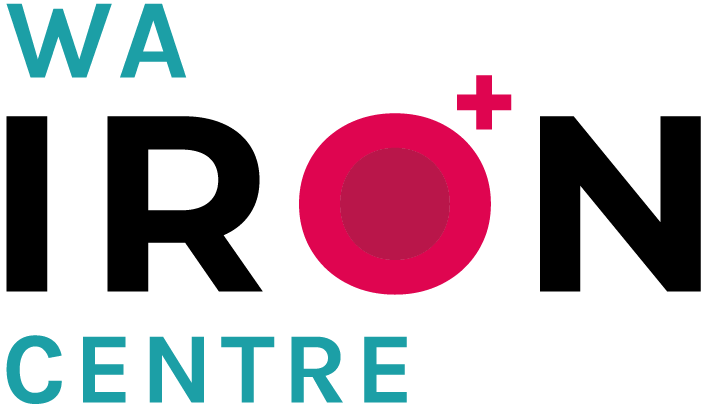What is iron deficiency?
Iron deficiency is a major health problem affecting at least 25% of the worlds population. According to the World Health Organisation it is the most common nutritional disorder in the world 1. The impact on the almost 2 billion people affected 2 is profound with poor quality of life, predisposition to other diseases and reduced life expectancy 3.
The situation in Australia is better but the numbers are unacceptably high. It is estimated that about 12% of our population is affected. The group that is mostly affected are women under the age of 50 years where up to 40% are affected 4.
Iron deficiency occurs more frequently than other common diseases such as diabetes and hypertension. Despite this iron deficiency is still under recognised, under diagnosed and treated inadequately.
Haemoglobin carries oxygen from the lungs to your muscles and organs. Iron is essential in creating haemoglobin and this means that when iron levels are low, so too is your haemoglobin. This is known as iron deficiency anaemia. Long term iron deficiency is a common cause of iron deficiency anaemia around the world and in Australia, it is the most common nutrient deficiency. With less oxygen being transported around your body, it is common for people with low iron levels to feel fatigued or exhausted.
What causes iron deficiency?
Iron deficiency can be the result of one of the following:
- A lack of iron in your diet. This means that your body isn’t getting the iron it needs, which may be due to nutritional deficiency, medications or poor absorption (which can be attributed to coeliac and bariatric surgery).
- Blood loss through surgery, heavy menstrual bleeding or GI can lead to low iron levels until the iron stores are replaced.
- An increased need for iron, including physiological, pregnancy and pre-menopausal women.
- An inability to absorb iron. There are some people who do not utilise all the iron that their bodies absorb. This functional iron deficiency may be due to chronic inflammation, heart failure or renal failure.
The potential to become iron deficient can rise rapidly with age.
Risk Factor
Everyone can experience iron deficiency or iron deficiency anaemia, but there are a few groups of people who are at increased risk:
- Women – Due to blood loss during menstruation, women are generally at a higher risk of iron deficiency anaemia.
- Malabsorption disorders – People suffering from Coeliac, or who may have had gastric alteration surgery are at risk of iron deficiency because they are unable to absorb as much iron from their diets.
- Infants and children – Babies born prematurely or with a low birth weight may be susceptible to low iron levels, particularly if they do not get enough iron from breast milk or formula. Children need extra iron during growth spurts. If your child isn’t eating a healthy, varied diet, he or she may be at risk of anaemia.
- Vegetarians – People who eat a plant-based diet need to ensure they eat iron-rich foods to reduce their risk of iron deficiency anaemia.
- Frequent blood donors – Frequently donating blood may put the donor at risk of iron deficiency anaemia because the loss of blood means a loss of iron stores.
Symptoms
Sometimes and especially in the early stages there may be no symptoms and the condition can only be identified by a blood test. More commonly however there are numerous symptoms that can suggest iron deficiency. When the iron depletion progresses, it is more likely that more symptoms will develop as the oxygen levels and energy generation in cells is compromised.
Common symptoms of iron deficiency and iron deficiency anaemia include:
- Tiredness and fatigue
- Mouth ulcers
- Hair loss
- Bruising
- Headache
- Paleness
- Brittle nails
- Cold intolerance
- Restless leg
- Craving for ice
- Infections
- Shortness of breath, palpitations and dizziness
- Cracks at the corner of the mouth
- Soreness of tongue and dry mouth
- Irritability, low mood
- Poor concentration and attention
References
1. World Health Organization -Micronutrient deficiencies – iron deficiency anaemia. https://www.who.int/nutrition/topics/ida/en/
2. Miller, J. Iron Deficiency Anaemia – A common and curable condition. Cold Spring Harb Perspect Med 2013;3:a011866
3. Carmaschella C. Iron Deficiency, N Engl J Med 2015; 372:1832-1843
4. Minck, S., Jayasuriya P, Leahy M, Gallagher T. Iron Deficiency: Translating New Evidence into Practice. https://www.healthed.com.au/monographs/iron-deficiency-translating-new-evidence-practice/. 2017
